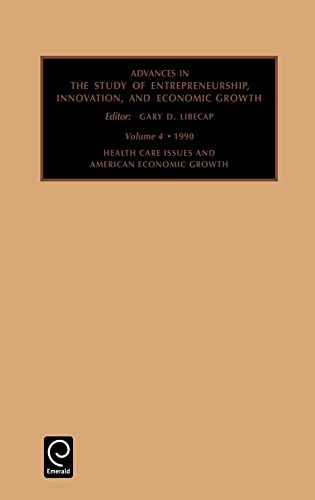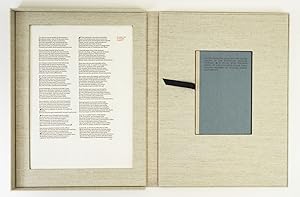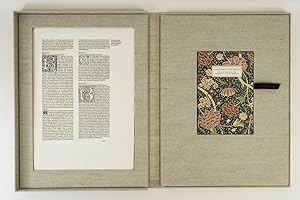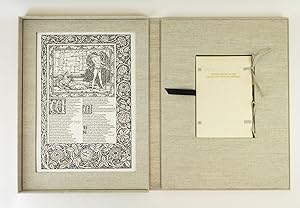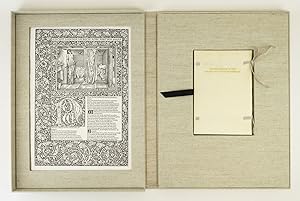Leaf Philip (28 results)
FeedbackSearch filters
Product Type
- All Product Types
- Books (28)
- Magazines & Periodicals (No further results match this refinement)
- Comics (No further results match this refinement)
- Sheet Music (No further results match this refinement)
- Art, Prints & Posters (No further results match this refinement)
- Photographs (No further results match this refinement)
- Maps (No further results match this refinement)
- Manuscripts & Paper Collectibles (No further results match this refinement)
Condition
Binding
Collectible Attributes
- First Edition (1)
- Signed (No further results match this refinement)
- Dust Jacket (No further results match this refinement)
- Seller-Supplied Images (14)
- Not Print on Demand (24)
Free Shipping
Seller Rating
-
Research in Community and Mental Health: Theoretical Positions Vol 4 (Advances in the Study of Entrepreneurship, Innovation and Economic Growth)
Published by Emerald Group Publishing Limited, 1995
ISBN 10: 1559381914 ISBN 13: 9781559381918
Seller: Bookmonger.Ltd, HILLSIDE, NJ, U.S.A.
Hardcover. Condition: New.
More buying choices from other sellers on AbeBooks
New offers from £ 14.61
Used offers from £ 15.39
Also find Hardcover
-
Research in Community and Mental Health: A Research Annual. Volume 7, 1992.
Published by Jai Press, Greenwich, CT., 1992
ISBN 10: 1559384417 ISBN 13: 9781559384414
Seller: Tiber Books, Cockeysville, MD, U.S.A.
Hardcover. Condition: Good. 8vo, hardcover. Volume 7. No dj. Good condition. Ex-lib copy w/ single stamp on endpaper, rear pocket, spine label removed; highlighting on just 12 pgs (confined to a single paper), remainder bright & clean; faint scratch on cover. 321 pp.
More buying choices from other sellers on AbeBooks
New offers from £ 108.93
Used offers from £ 16.50
Also find Hardcover
-
June Leaf: A Survey of Painting, Sculpture and Works on Paper, 1948-1991
Published by Washington Project, Washington, D.C.,, Washington, D.C.,, 1991
ISBN 10: 0937237019 ISBN 13: 9780937237014
Seller: Design Books, New York, NY, U.S.A.
Soft Cover. Condition: Very Good. This is a very good softcover copy with light wear. Covers a bit rubbed. Completely clean. This catalog was prepared to accompany the exhibition in Washington, D.C., from April 6 to June 2, 1991 and then at the Addison Gallery of American Art in Andover Massachusetts from October 18 to December 15, 1991. Essay by Lucy Lippard. Conversation between June Leaf and Philip Brookman. Chronology. Bibliography. Checklist with 130 woeks catalogued. 9 color plates + black & white illustrations. 8" high X 9" wide, 48 pages. Scarce. This book will be securely wrapped and shipped with tracking.
-
Condition: Fine. The book is in fine condition.
-
Condition: Fine. Number of pages: 479 pages Size: 22cm.
-
Condition: Fine. Size: A5 size Number of books: 1 book.
-
Chicago Review, Volume 11, Number 1 (Spring 1957) - includes "Positive Thinking on Pennsylvania Avenue" by Philip Roth
Published by Chicago: Chicago Review, 1957
Seller: Philip Smith, Bookseller, Berkeley, CA, U.S.A.
First Edition
Soft cover. Condition: Fine. 1st edition. Near Fine. 8vo, 128pp, printed wrappers. Nice copy of this classic 1957 issue, includes the story "Positive Thinking on Pennsylvania Avenue" by Philip Roth and contributions by Thomas Mann, Malcolm de Chazal, et al. Publisher's mimeographed notice and return envelope laid in. Unmarked copy, minor wear and toning. Not Signed.
-
LETTERS FROM THE 15TH CENTURY: ON THE ORIGINS OF THE KELMSCOTT CHAUCER TYPEFACE. A STUDY, WITH SPECIMEN LEAVES, OF THE INFLUENCE OF THE EARLY GERMAN PRINTERS ON WILLIAM MORRIS' MASTERPIECE
Published by Phillip J. Pirages, McMinnville, Oregon, 2019
Seller: Phillip J. Pirages Rare Books (ABAA), McMinnville, OR, U.S.A.
Text: 244 x 154 mm. (9 1/8 x 6 1/8"); Case: 502 x 372 mm. (19 3/4 x 14 5/8"). ii, 75 pp. Bound in linen-backed blue paper boards (inspired by Kelmscott Press bindings) by Amy Borezo, who also constructed the case holding the volume and leaves. The book printed letterpress on Zerkall Book Laid Vellum paper by Arthur Larson at Horton Tank Graphics. Book layout by Jill Mann. EACH COPY WITH FIVE LEAVES: ONE FROM THE KELMSCOTT CHAUCER with text only AND ONE EACH FROM THE PRESSES OF FOUR GERMAN PRINTERS FROM THE 1470s--PETER SCHOEFFER, JOHANN MENTELIN, G‹NTHER ZAINER, AND ANTON KOBERGER. ‚The incunabular leaves consistently excellent, with only minor defects, and the Kelmscott leaves (which were never part of a bound volume) in entirely fine condition. This is a unique leaf book in the way that it combines three elements: a significant private press production involving people at the top of their craft, a scholarly commentary that contributes to a further understanding of the history of printing, and--most important--five leaves: one from the Kelmscott Press "Works" of Geoffrey Chaucer and four from books issued by German printers at work in the 1470s. The book has been printed and bound by hand by gifted professionals; the essay addresses a topic of significance to typophiles in a considerably more thoroughgoing way than has been done before; and the assemblage of leaves represents a powerful visual reinforcement of the text, as well as an opportunity to share in the ownership of four important incunabula, along with the extraordinary Kelmscott Chaucer. The story of the production is heavy on serendipity: in the winter of 2012, after purchasing a very incomplete copy of the Kelmscott Chaucer at auction, we considered the possibility of producing a leaf book, but because the Chaucer--universally considered to be one of the most beautiful books ever printed--had been written about by so many different people in so many different ways, we didn't know what aspect was left for us to explore. The one topic we fastened on as thus far inadequately examined is the origin of the work's typeface. We soon learned that Morris, who is known to have owned more than 500 incunables, most admired--and was, consequently, most likely to have been influenced in his typographic design by--Peter Schoeffer of Mainz, Johann Mentelin of Strassburg, GŁnther Zainer of Augsburg, and Anton Koberger of Nuremberg. Over the course of the years succeeding the purchase of the defective Chaucer, we were fortunate beyond all expectation to acquire incomplete books from each of these four eminent printers. As a result, the present leaf book will allow the reader not only to read in the accompanying essay about the influence on Morris of his typographic forebears, but also to compare with his or her own eyes the resemblances between the Kelmscott leaf and the leaves from four centuries earlier. We have additional copies of this binding available at different price points. Please contact us directly for more details. ONE OF 32 COPIES in linen-backed blue paper boards from a total edition of 165 COPIES.
-
LETTERS FROM THE 15TH CENTURY: ON THE ORIGINS OF THE KELMSCOTT CHAUCER TYPEFACE. A STUDY, WITH SPECIMEN LEAVES, OF THE INFLUENCE OF THE EARLY GERMAN PRINTERS ON WILLIAM MORRIS' MASTERPIECE
Published by Phillip J. Pirages, McMinnville, Oregon, 2019
Seller: Phillip J. Pirages Rare Books (ABAA), McMinnville, OR, U.S.A.
Text: 244 x 154 mm. (9 1/8 x 6 1/8"); Case: 502 x 372 mm. (19 3/4 x 14 5/8"). ii, 75 pp. Bound in floral-patterned cloth after a Morris design by Amy Borezo, who also constructed the case holding the volume and leaves. The book printed letterpress on Zerkall Book Laid Vellum paper by Arthur Larson at Horton Tank Graphics. Book layout by Jill Mann. EACH COPY WITH FIVE LEAVES: ONE FROM THE KELMSCOTT CHAUCER with multiple six-line initials AND ONE EACH FROM THE PRESSES OF FOUR GERMAN PRINTERS FROM THE 1470s--PETER SCHOEFFER, JOHANN MENTELIN, G‹NTHER ZAINER, AND ANTON KOBERGER. ‚The incunabular leaves consistently excellent, with only minor defects, and the Kelmscott leaves (which were never part of a bound volume) in entirely fine condition. This is a unique leaf book in the way that it combines three elements: a significant private press production involving people at the top of their craft, a scholarly commentary that contributes to a further understanding of the history of printing, and--most important--five leaves: one from the Kelmscott Press "Works" of Geoffrey Chaucer and four from books issued by German printers at work in the 1470s. The book has been printed and bound by hand by gifted professionals; the essay addresses a topic of significance to typophiles in a considerably more thoroughgoing way than has been done before; and the assemblage of leaves represents a powerful visual reinforcement of the text, as well as an opportunity to share in the ownership of four important incunabula, along with the extraordinary Kelmscott Chaucer. The story of the production is heavy on serendipity: in the winter of 2012, after purchasing a very incomplete copy of the Kelmscott Chaucer at auction, we considered the possibility of producing a leaf book, but because the Chaucer--universally considered to be one of the most beautiful books ever printed--had been written about by so many different people in so many different ways, we didn't know what aspect was left for us to explore. The one topic we fastened on as thus far inadequately examined is the origin of the work's typeface. We soon learned that Morris, who is known to have owned more than 500 incunables, most admired--and was, consequently, most likely to have been influenced in his typographic design by--Peter Schoeffer of Mainz, Johann Mentelin of Strassburg, GŁnther Zainer of Augsburg, and Anton Koberger of Nuremberg. Over the course of the years succeeding the purchase of the defective Chaucer, we were fortunate beyond all expectation to acquire incomplete books from each of these four eminent printers. As a result, the present leaf book will allow the reader not only to read in the accompanying essay about the influence on Morris of his typographic forebears, but also to compare with his or her own eyes the resemblances between the Kelmscott leaf and the leaves from four centuries earlier. ONE OF 84 COPIES in floral-patterned cloth from a total edition of 165 COPIES.
-
LETTERS FROM THE 15TH CENTURY: ON THE ORIGINS OF THE KELMSCOTT CHAUCER TYPEFACE. A STUDY, WITH SPECIMEN LEAVES, OF THE INFLUENCE OF THE EARLY GERMAN PRINTERS ON WILLIAM MORRIS' MASTERPIECE
Published by Phillip J. Pirages, McMinnville, Oregon, 2019
Seller: Phillip J. Pirages Rare Books (ABAA), McMinnville, OR, U.S.A.
Text: 244 x 154 mm. (9 1/8 x 6 1/8"); Case: 502 x 372 mm. (19 3/4 x 14 5/8"). ii, 75 pp. Bound in floral-patterned cloth after a Morris design by Amy Borezo, who also constructed the case holding the volume and leaves. The book printed letterpress on Zerkall Book Laid Vellum paper by Arthur Larson at Horton Tank Graphics. Book layout by Jill Mann. EACH COPY WITH FIVE LEAVES: ONE FROM THE KELMSCOTT CHAUCER with one or more 10-line initials, multiple six- and/or three-line initials, AND ONE EACH FROM THE PRESSES OF FOUR GERMAN PRINTERS FROM THE 1470s--PETER SCHOEFFER, JOHANN MENTELIN, G‹NTHER ZAINER, AND ANTON KOBERGER. ‚The incunabular leaves consistently excellent, with only minor defects, and the Kelmscott leaves (which were never part of a bound volume) in entirely fine condition. This is a unique leaf book in the way that it combines three elements: a significant private press production involving people at the top of their craft, a scholarly commentary that contributes to a further understanding of the history of printing, and--most important--five leaves: one from the Kelmscott Press "Works" of Geoffrey Chaucer and four from books issued by German printers at work in the 1470s. The book has been printed and bound by hand by gifted professionals; the essay addresses a topic of significance to typophiles in a considerably more thoroughgoing way than has been done before; and the assemblage of leaves represents a powerful visual reinforcement of the text, as well as an opportunity to share in the ownership of four important incunabula, along with the extraordinary Kelmscott Chaucer. The story of the production is heavy on serendipity: in the winter of 2012, after purchasing a very incomplete copy of the Kelmscott Chaucer at auction, we considered the possibility of producing a leaf book, but because the Chaucer--universally considered to be one of the most beautiful books ever printed--had been written about by so many different people in so many different ways, we didn't know what aspect was left for us to explore. The one topic we fastened on as thus far inadequately examined is the origin of the work's typeface. We soon learned that Morris, who is known to have owned more than 500 incunables, most admired--and was, consequently, most likely to have been influenced in his typographic design by--Peter Schoeffer of Mainz, Johann Mentelin of Strassburg, GŁnther Zainer of Augsburg, and Anton Koberger of Nuremberg. Over the course of the years succeeding the purchase of the defective Chaucer, we were fortunate beyond all expectation to acquire incomplete books from each of these four eminent printers. As a result, the present leaf book will allow the reader not only to read in the accompanying essay about the influence on Morris of his typographic forebears, but also to compare with his or her own eyes the resemblances between the Kelmscott leaf and the leaves from four centuries earlier. We have additional copies of this binding available at different price points. Please contact us directly for more details. ONE OF 84 COPIES in floral-patterned cloth from a total edition of 165 COPIES.
-
LETTERS FROM THE 15TH CENTURY: ON THE ORIGINS OF THE KELMSCOTT CHAUCER TYPEFACE. A STUDY, WITH SPECIMEN LEAVES, OF THE INFLUENCE OF THE EARLY GERMAN PRINTERS ON WILLIAM MORRIS' MASTERPIECE
Published by Phillip J. Pirages, McMinnville, Oregon, 2019
Seller: Phillip J. Pirages Rare Books (ABAA), McMinnville, OR, U.S.A.
Text: 244 x 154 mm. (9 1/8 x 6 1/8"); Case: 502 x 372 mm. (19 3/4 x 14 5/8"). ii, 75 pp. Bound in flexible vellum with ties (inspired by Kelmscott Press bindings) by Amy Borezo, who also constructed the case holding the volume and leaves. The book printed letterpress on Zerkall Book Laid Vellum paper by Arthur Larson at Horton Tank Graphics. Book layout by Jill Mann. EACH COPY WITH FIVE LEAVES: ONE FROM THE KELMSCOTT CHAUCER WITH woodcut borders and initials and A WOODCUT SCENE DESIGNED BY EDWARD BURNE-JONES AND ONE EACH FROM THE PRESSES OF FOUR GERMAN PRINTERS FROM THE 1470s--PETER SCHOEFFER, JOHANN MENTELIN, G‹NTHER ZAINER, AND ANTON KOBERGER. ‚The incunabular leaves consistently excellent, with only minor defects, and the Kelmscott leaves (which were never part of a bound volume) in entirely fine condition. This is a unique leaf book in the way that it combines three elements: a significant private press production involving people at the top of their craft, a scholarly commentary that contributes to a further understanding of the history of printing, and--most important--five leaves: one from the Kelmscott Press "Works" of Geoffrey Chaucer and four from books issued by German printers at work in the 1470s. The book has been printed and bound by hand by gifted professionals; the essay addresses a topic of significance to typophiles in a considerably more thoroughgoing way than has been done before; and the assemblage of leaves represents a powerful visual reinforcement of the text, as well as an opportunity to share in the ownership of four important incunabula, along with the extraordinary Kelmscott Chaucer. The story of the production is heavy on serendipity: in the winter of 2012, after purchasing a very incomplete copy of the Kelmscott Chaucer at auction, we considered the possibility of producing a leaf book, but because the Chaucer--universally considered to be one of the most beautiful books ever printed--had been written about by so many different people in so many different ways, we didn't know what aspect was left for us to explore. The one topic we fastened on as thus far inadequately examined is the origin of the work's typeface. We soon learned that Morris, who is known to have owned more than 500 incunables, most admired--and was, consequently, most likely to have been influenced in his typographic design by--Peter Schoeffer of Mainz, Johann Mentelin of Strassburg, GŁnther Zainer of Augsburg, and Anton Koberger of Nuremberg. Over the course of the years succeeding the purchase of the defective Chaucer, we were fortunate beyond all expectation to acquire incomplete books from each of these four eminent printers. As a result, the present leaf book will allow the reader not only to read in the accompanying essay about the influence on Morris of his typographic forebears, but also to compare with his or her own eyes the resemblances between the Kelmscott leaf and the leaves from four centuries earlier. We have additional copies of this binding available at different price points. Please contact us directly for more details. ONE OF 47 COPIES (numbered I-XLVII) bound in flexible vellum from a total edition of 165 COPIES.
-
LETTERS FROM THE 15TH CENTURY: ON THE ORIGINS OF THE KELMSCOTT CHAUCER TYPEFACE. A STUDY, WITH SPECIMEN LEAVES, OF THE INFLUENCE OF THE EARLY GERMAN PRINTERS ON WILLIAM MORRIS' MASTERPIECE
Published by Phillip J. Pirages, McMinnville, Oregon, 2019
Seller: Phillip J. Pirages Rare Books (ABAA), McMinnville, OR, U.S.A.
Text: 244 x 154 mm. (9 1/8 x 6 1/8"); Case: 502 x 372 mm. (19 3/4 x 14 5/8"). ii, 75 pp. Bound in flexible vellum with ties (inspired by Kelmscott Press bindings) by Amy Borezo, who also constructed the case holding the volume and leaves. The book printed letterpress on Zerkall Book Laid Vellum paper by Arthur Larson at Horton Tank Graphics. Book layout by Jill Mann. EACH COPY WITH FIVE LEAVES: ONE FROM THE KELMSCOTT CHAUCER WITH woodcut borders, woodcut beginning word, and A WOODCUT SCENE DESIGNED BY EDWARD BURNE-JONES, AND ONE EACH FROM THE PRESSES OF FOUR GERMAN PRINTERS FROM THE 1470s--PETER SCHOEFFER, JOHANN MENTELIN, G‹NTHER ZAINER, AND ANTON KOBERGER, the Zainer leaf featuring at least one woodcut initial. ‚The incunabular leaves consistently excellent, with only minor defects, and the Kelmscott leaves (which were never part of a bound volume) in entirely fine condition. This is a unique leaf book in the way that it combines three elements: a significant private press production involving people at the top of their craft, a scholarly commentary that contributes to a further understanding of the history of printing, and--most important--five leaves: one from the Kelmscott Press "Works" of Geoffrey Chaucer and four from books issued by German printers at work in the 1470s. The book has been printed and bound by hand by gifted professionals; the essay addresses a topic of significance to typophiles in a considerably more thoroughgoing way than has been done before; and the assemblage of leaves represents a powerful visual reinforcement of the text, as well as an opportunity to share in the ownership of four important incunabula, along with the extraordinary Kelmscott Chaucer. The story of the production is heavy on serendipity: in the winter of 2012, after purchasing a very incomplete copy of the Kelmscott Chaucer at auction, we considered the possibility of producing a leaf book, but because the Chaucer--universally considered to be one of the most beautiful books ever printed--had been written about by so many different people in so many different ways, we didn't know what aspect was left for us to explore. The one topic we fastened on as thus far inadequately examined is the origin of the work's typeface. We soon learned that Morris, who is known to have owned more than 500 incunables, most admired--and was, consequently, most likely to have been influenced in his typographic design by--Peter Schoeffer of Mainz, Johann Mentelin of Strassburg, GŁnther Zainer of Augsburg, and Anton Koberger of Nuremberg. Over the course of the years succeeding the purchase of the defective Chaucer, we were fortunate beyond all expectation to acquire incomplete books from each of these four eminent printers. As a result, the present leaf book will allow the reader not only to read in the accompanying essay about the influence on Morris of his typographic forebears, but also to compare with his or her own eyes the resemblances between the Kelmscott leaf and the leaves from four centuries earlier. ONE OF 47 COPIES (numbered I-XLVII) bound in flexible vellum from a total edition of 165 COPIES.


